Race Performance Ratings - Hamilton versus Rosberg
Just ten points separate title contenders Lewis Hamilton and Nico Rosberg heading into this weekend's Grand Prix at Silverstone. But while there may be little to split the pair in the standings, momentum has swung markedly from race to race. Where has each driver excelled - and where are they trailing their team mate? With the help of Formula1.com's exclusive Race Performance Ratings, we investigate...
What are Race Performance Ratings?
Five key performance parameters are measured: Aggression, Braking, Cornering, Steering and Throttle. Using raw telemetry data, a driver is given a score on a scale of 1-10 for each category, based on how he compares to his competitors. For example, the driver making the most steering inputs at a specific point in the race will be given a score of 10 for the Steering category; the driver making the fewest will be given a 1. The other drivers will be somewhere in between.
The individual scores for each of the five categories - which update every five seconds throughout the race - are then averaged to give an overall Race Performance Rating. Subscribers to F1® Access can view Race Performance Ratings in real-time during every Grand Prix.
Hamilton versus Rosberg
For this analysis, we took an average for Hamilton's and Rosberg's scores in each category over the first eight races, and plotted them against each other. Given their identical machinery, the radar chart below is therefore entirely reflective of the differences in driving styles and set-up preferences.
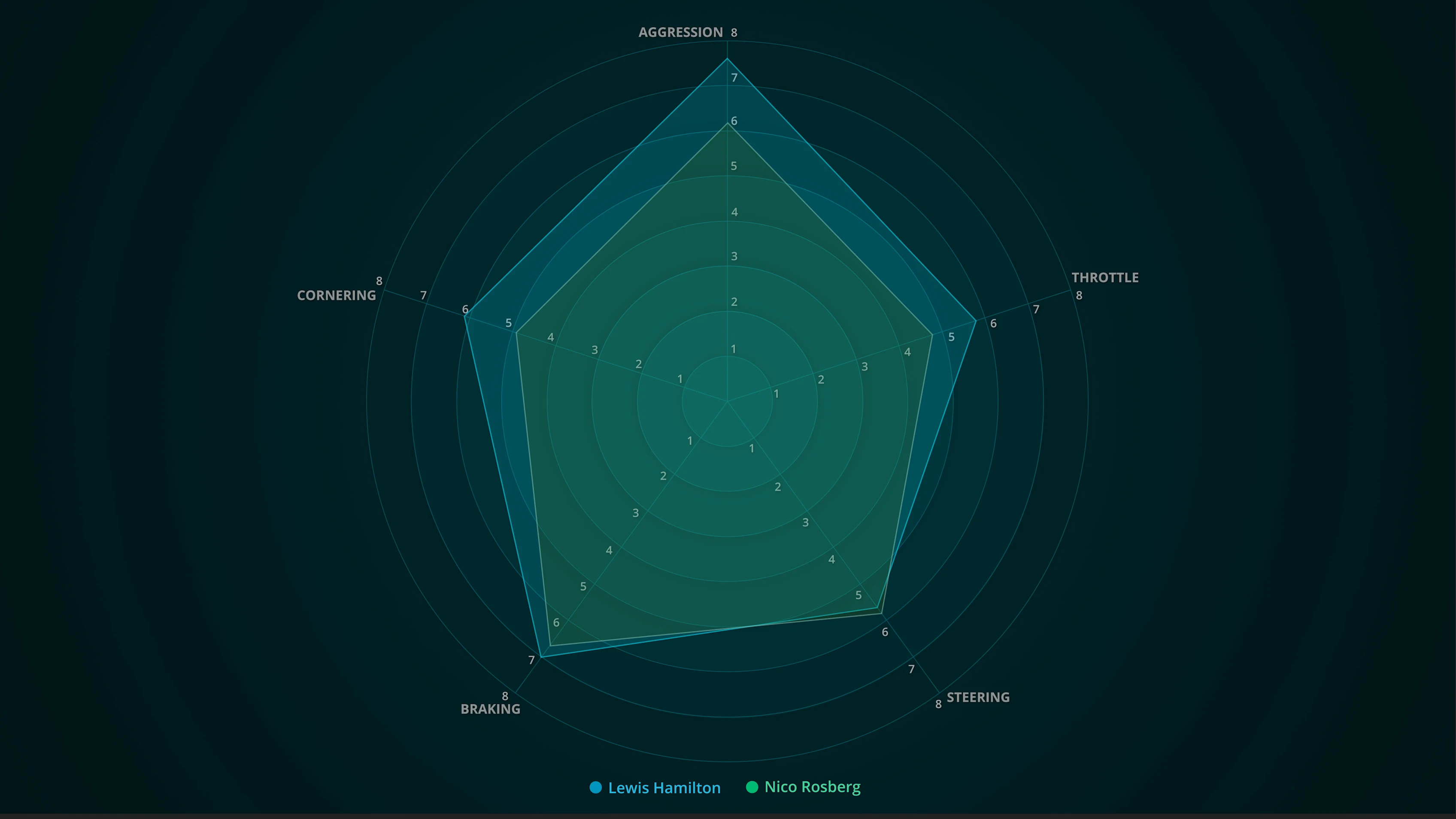
As the above shows, Hamilton has scored more highly than Rosberg in four of the five categories over the first eight Grands Prix of the season. As a general rule, he tends to pull more g-force both under braking and acceleration (Aggression) and in the corners (Cornering); he tends to be earlier on the throttle out of corners (Throttle); and he tends to brake slightly later and harder (Braking).
Rosberg, meanwhile, tends to make slightly more adjustments on the steering wheel (Steering).
Of course, these scores do not convey the often small and nuanced changes that occur from race to race. There have been events, for example, where Rosberg scores more highly than Hamilton - and vice versa. In order to analyse the scores in more depth, we looked at the three areas in which the pair's scores differed most - Cornering, Aggression and Throttle - and mapped out each driver's average on a race-by-race basis.
Aggression doesn't always pay
For the first three races, Hamilton scores consistently higher than Rosberg in the Aggression stakes - and finishes ahead of the German on every occasion.
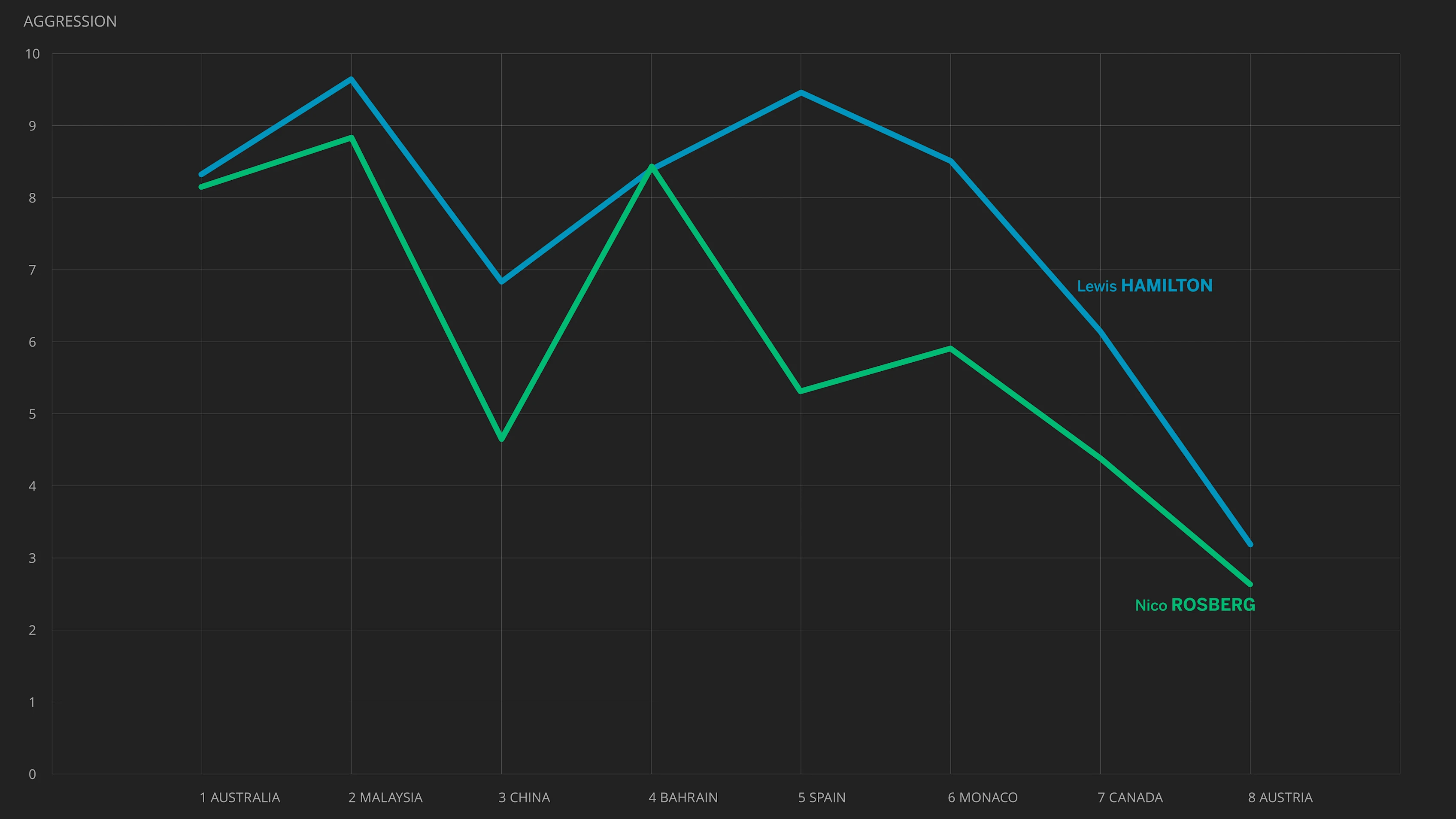
As ever though, one single factor doesn't determine outright performance. Rosberg, for example, has a slightly higher score in Bahrain where he was forced to battle both Ferraris, though in the end he could only finish third as Hamilton triumphed. And in both Spain and Austria - circuits where Rosberg had the measure of Hamilton - Rosberg again scores lower than his team mate. In fact, the gap between the pair is most accentuated in Spain, where Rosberg also booked his biggest winning margin so far this year. In this instance, Hamilton had to be very aggressive in order to pull off a three-stop strategy to clear Ferrari's Sebastian Vettel, who had moved ahead of Hamilton after the latter suffered a very poor getaway.
Interestingly, both men's scores fell in Canada and again in Austria - Hamilton's by a greater factor than Rosberg's. This is perhaps reflective of Mercedes adopting different set-ups to adapt to the high-speed, and fuel-heavy, nature of the circuits.
Cornering
Rosberg and Hamilton have two very different traces for Cornering: the Briton alternates between peaks and troughs almost every race, while Rosberg's is more steady and consistent. That said, both exhibit a similar trend: that Mercedes started among the highest scorers on the grid for g-forces in corners, but have gradually fallen down the pecking order.
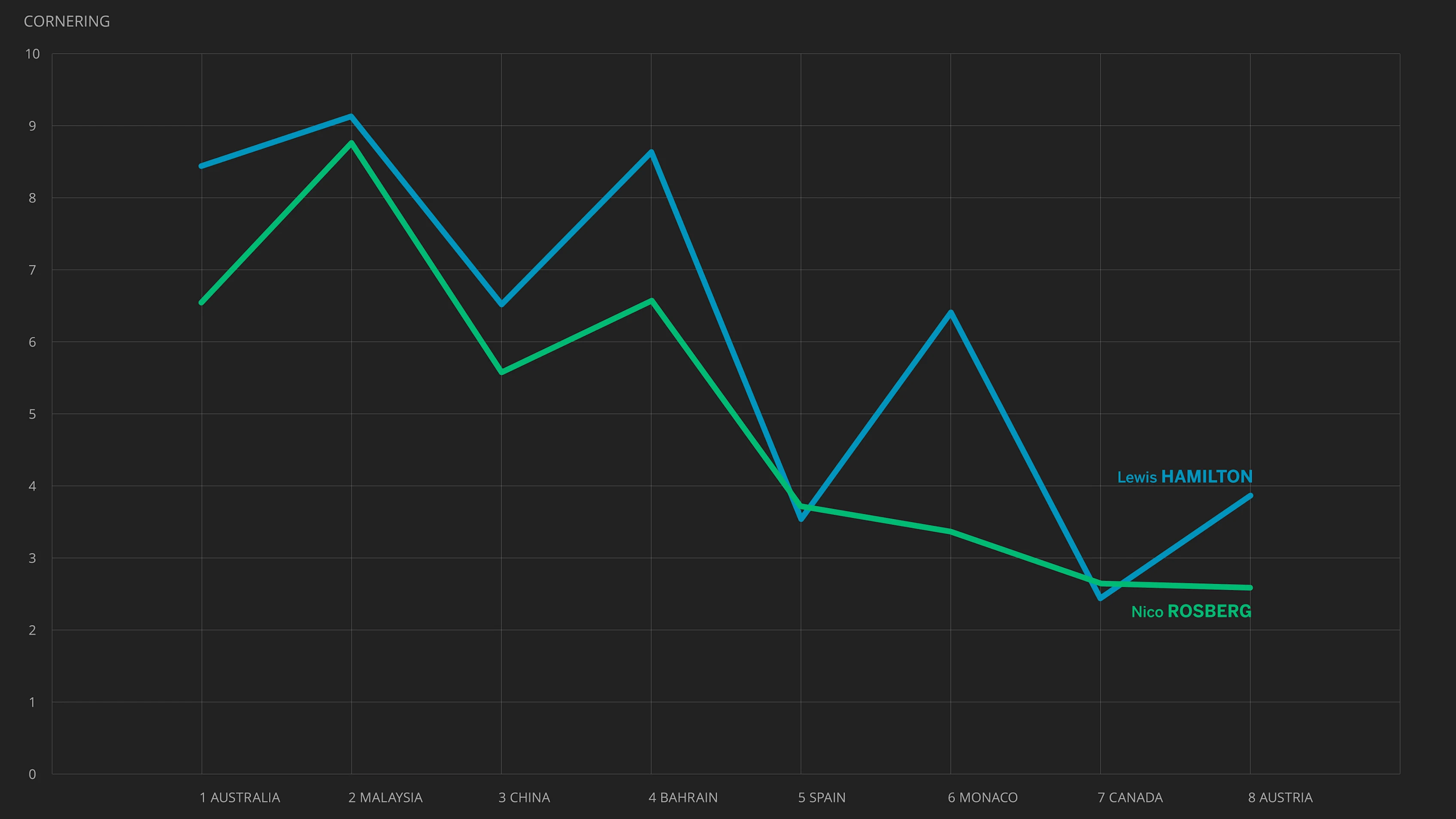
The disparity between the two drivers is at its greatest at Monaco, where Hamilton seemed to have complete control of the race - at least until the much-discussed decision to pit under a late safety car. In contrast, Spain is one of only two races so far this year where Rosberg has posted a higher score than Hamilton - and it remains his most emphatic victory, with Hamilton finishing more than 17 seconds down the road.
The other race is Canada, where Rosberg shadowed Hamilton for the entire 70 laps, finishing just 2s behind at the chequered flag. In fact Canada and Austria appear to be uncharacteristic: in the first six races, the driver with the higher Cornering score always finished ahead. In Montreal and Spielberg, however, that dynamic was reversed.
Throttle
Unlike Aggression and Cornering, there is almost nothing to choose between Rosberg and Hamilton in the Throttle category over the first four races of the year. In all four, Hamilton finished ahead of his team mate.
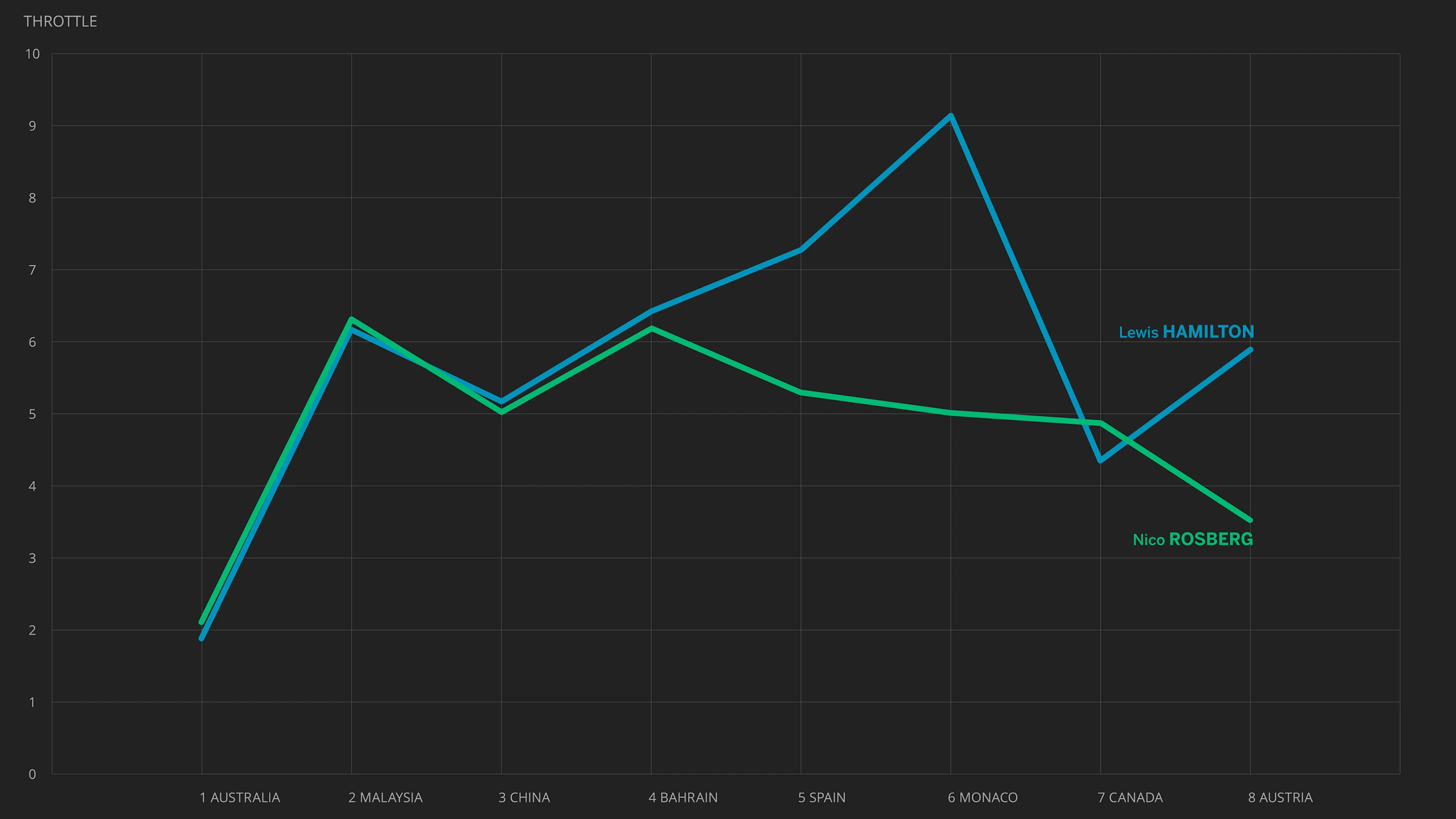
The dynamic changes wildly over the next four races, however, with Hamilton scoring far higher than Rosberg in Spain - where the Briton had to push hard after a bad start dropped him behind Vettel - and Monaco, where Hamilton was masterful for almost the entire race.
As strong as Hamilton was in Monte Carlo, it is Rosberg who scores more highly in Montreal - and yet it is still Hamilton who triumphs. This may be down to the fact Rosberg was in attack mode for the majority of the race as he shadowed Hamilton, while the Briton had fuel concerns that meant he had to employ lift and coast measures where necessary.
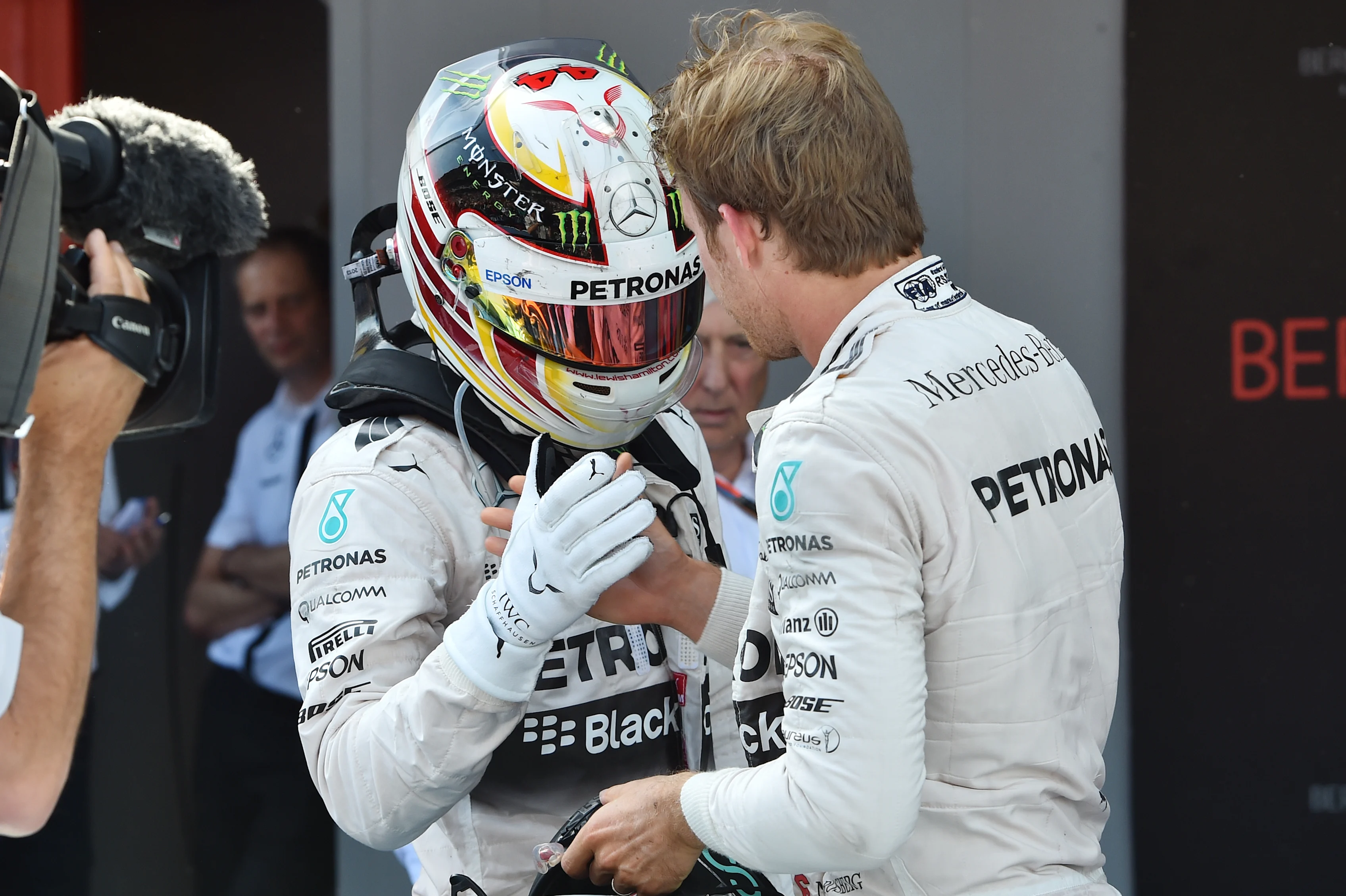
The two times Rosberg has been smoother on the steering and harder on the brakes than Hamilton, he has triumphed
In Austria the dynamic - and result - changes once more. Hamilton scores more strongly than Rosberg, and yet it is the German who wins, and in convincing fashion. In isolation, this appears confusing: Rosberg has a lower score in Aggression, Cornering and Throttle in Spielberg, but still prevails in the fight with his team mate.
The answer appears to lie in the two other scores: Rosberg is smoother on the steering wheel than Hamilton, and also far better on the brakes. That is by no means a usual pattern: indeed the only other occasion on which that has happened so far this year is Spain.
Understanding Race Performance Ratings
As the year progresses, we'll be able to use Race Performance Ratings to assess other areas of performance. Will one team, for example, suddenly make massive strides? Will Rosberg's momentum - and his out-scoring of Hamilton in key parameters - continue? Which driver will prove to have the biggest advantage over his team mate?
In the meantime, if you want to understand the parameters in more depth, you can check out our comprehensive analysis of each below:
- Race Performance Ratings explained - Aggression
- Race Performance Ratings explained - Braking
- Race Performance Ratings explained - Cornering
- Race Performance Ratings explained - Steering
- Race Performance Ratings explained - Throttle
Enhance the way you experience Formula 1 racing, and discover a level of detail you won't find anywhere else - complete with in-depth insights, exclusive content, up-to-the-minute race data, and more - with F1® Access. To find out more, click here.
Next Up
Related Articles
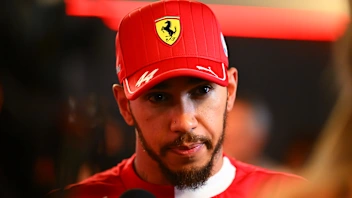 Hamilton 'doesn't have a mindset' for 2026 after tricky year
Hamilton 'doesn't have a mindset' for 2026 after tricky year Sainz hopes point-less finish in Abu Dhabi ‘serves as a wake-up call’
Sainz hopes point-less finish in Abu Dhabi ‘serves as a wake-up call’ Power RankingsWho dazzled our judges at the finale in Abu Dhabi?
Power RankingsWho dazzled our judges at the finale in Abu Dhabi?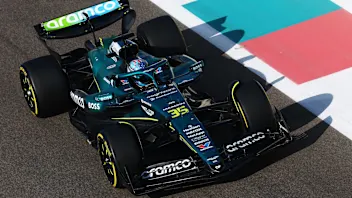 Crawford sets the pace at Abu Dhabi post-season test
Crawford sets the pace at Abu Dhabi post-season test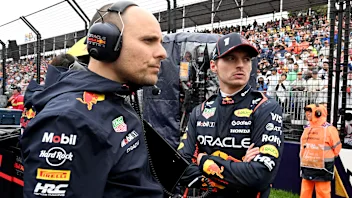 Verstappen pays tribute to Lambiase after ‘emotional year’
Verstappen pays tribute to Lambiase after ‘emotional year’ JacquesHow did the rookies do in their first F1 season?
JacquesHow did the rookies do in their first F1 season?